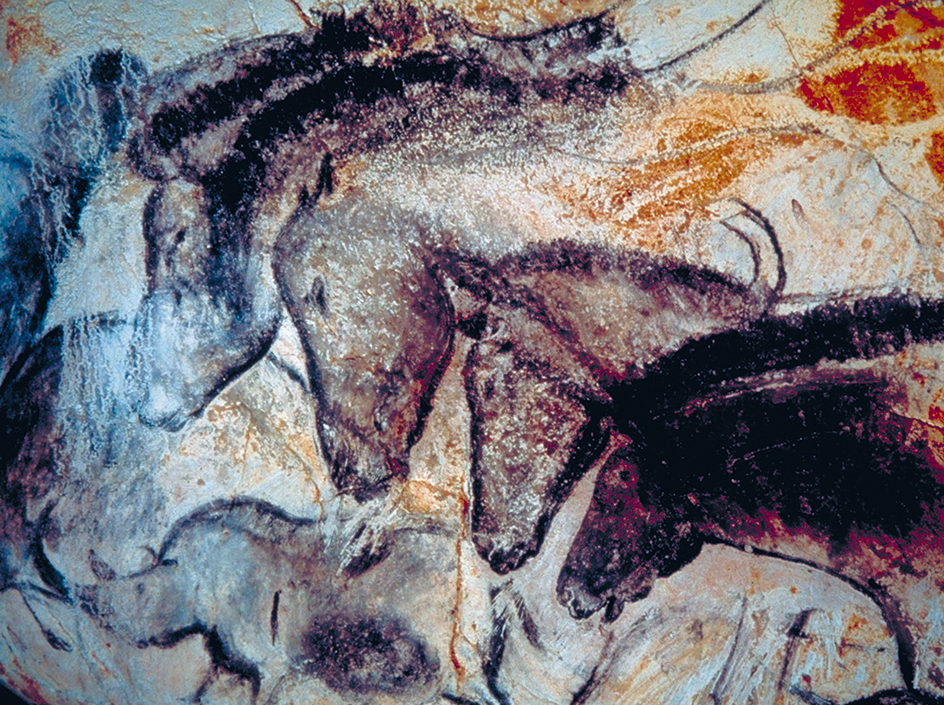Chauvet Cave << shoh VAY >> is a site in southern France where the walls bear some of the oldest prehistoric cave paintings known. The cave lies near Vallon-Pont-d’Arc (northwest of Marseille) on the Ardèche River, which flows into the Rhone River. Prehistoric people made the paintings between about 37,000 and 28,000 years ago during a period of the Stone Age known as the Upper Paleolithic. Jean-Marie Chauvet, a French cave explorer, and two friends discovered the cave in 1994. Archaeologists and art historians consider Chauvet Cave to be one of the most important prehistoric art sites ever found.

Chauvet Cave measures about 790 feet (240 meters) in length from the entrance to the end. But inside the cave, the winding passages stretch a total of about 1,700 feet (500 meters) through 15 chambers. The paintings at Chauvet differ noticeably from those found at other Paleolithic cave sites. At Chauvet, the most common animals painted are predators, such as lions, panthers, hyenas, bears, and even owls. Cave paintings at other sites commonly show animals that prehistoric people hunted, such as horses, bison, and deer. Chauvet also has what appear to be paintings of insects, not found at any other Paleolithic cave site. Another painting shows a figure that archaeologists call “the sorcerer.” It is a composite creature that stands upright on human legs but has the head and humped back of a bison.
The prehistoric artists at Chauvet employed remarkably sophisticated techniques. They used naturally occurring pigments (coloring materials), such as charcoal, manganese, calcite, and red and yellow ocher. They carefully scraped the cave walls before painting to make the image stand out. They experimented with mixing ground charcoal into the wall’s surface to create shading and perspective. They also worked with natural bumps and hollows in the cave walls and ceilings to give the images a three-dimensional quality. Chauvet artists applied paint to the cave walls using pads and brushes made from animal fur or plant fibers, hollow bird bones, and even their mouths. They also dipped their hands into paint and pressed them on to the cave walls, leaving handprints and other designs.
Scholars use special techniques to study the fragile paintings and engravings at Chauvet Cave. They employ remote-controlled cameras, for example, to avoid disturbing the cave interior. With these techniques, scientists have been able to map a track of ancient human footprints that extend about 230 feet (70 meters) through the cave. The footprints are small and were probably made by a child about 28,000 years ago.
Prehistoric people did not live in Chauvet Cave. Archaeologists believe that they made the paintings there for use in rituals.
See also Altamira Cave; Lascaux Cave.
